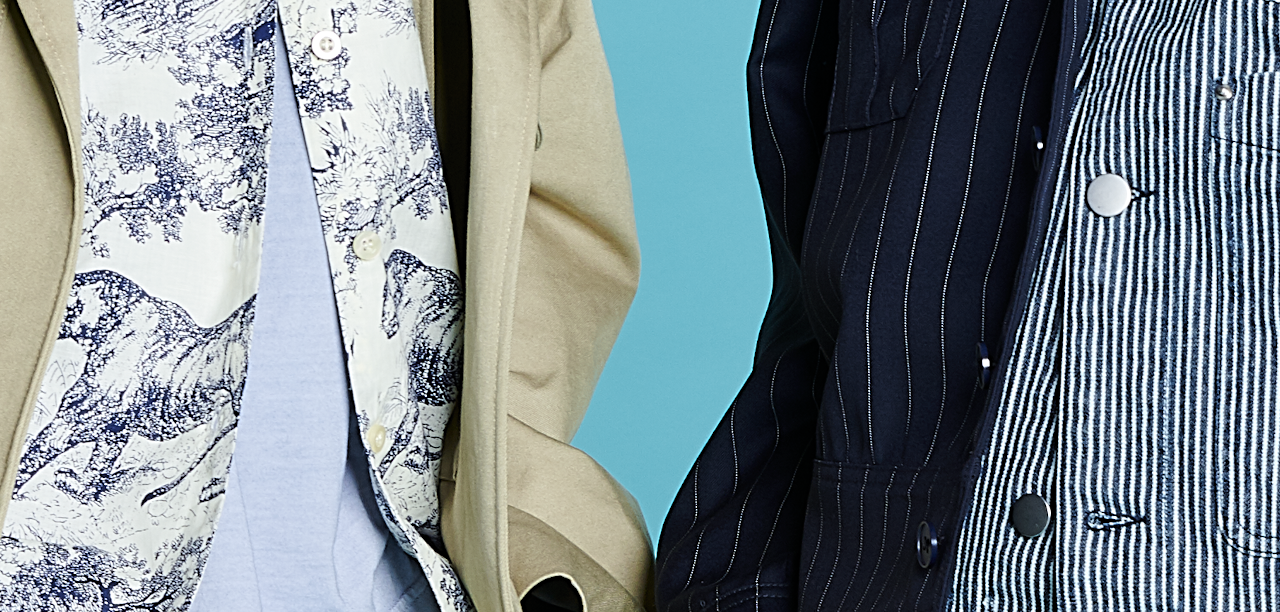The workwear trend
First, a little history :
As the name suggests, the workwear style has its origins in the manual working environment, where above all clothes needed to be hardwearing and functional.
The style trend that was built around this has had many influences: American cowboy jeans, the emblematic garments of the world’s armies and navies and not forgetting the outdoor clothes worn by lumberjacks and hunters.
All of these clothes are designed to be durable, to provide a good barrier against adverse weather, but without compromising on comfort.
For a century, work clothing remained confined to its original functions. Arguably, there was nothing particularly trendy about it in its original time. Then in the 1970s and 80s, Japanese designers started making it the DNA of their creations, initially using raw denim. They mastered the craft, reclaiming the original machinery used to make selvedge denim and they innovated in the use of indigo – the natural denim dye.
There are several highly positive features of clothing in this trend:
The hardwearing fabric has obvious benefits and a key element of workwear garments that remain true to the heritage of their style. The big winners are undoubtedly moleskin cotton and denim. Moleskin is a tightly woven cotton canvas, covered with a soft coating that imitates leather grain. It feels soft, like a peach, or like a mole – hence its name. Denim is a tight weave of indigo coloured cotton which also meets the criteria for being resistant.
Pockets are usually plenty. Whilst their origins are very practical, to carry tools for example, they clearly have a place in our contemporary lifestyles too. Pockets are a versatile design feature – they can be lined, they can be expanding, they can be secured with flaps or zips and in the workwear trend, we see them positioned in a number of places (chest, waist, back).
The workwear style has its colour palette too. In the way of uniforms, it can carry a message about the community from which the garment originated. Painters have traditionally worn white, carpenters black, whilst manual workers have often worn blue. The tribute to colour as a symbol of a collective identity remains, without being whimsical about changing fashion trends.
Some historic French brands are still purveyors of this very particular style today: Le Mont St Michel, Vetra, Atelier Tuffery.
In recent years, creators have also found their inspiration on the street which is quick becoming an essential zone of influence. Young people are increasingly buying their clothes in vintage or second hand stores which have always been outlets for the workwear trend. Each year we see an evolution towards more and more sophisticated pieces, apparent on the world’s largest fashion stages. Vuitton and Raf Simons are on board. Junya Watanabe finds a natural outlet for his creativity here. Jacquemus makes workwear the basis of his men’s collections, bringing in a wistful, nostalgic element to his creations. In treading the bold line between workwear and military inspiration, fashion designers are offering luxurious clothing, using ethical materials, whilst preserving the very elements that make this style so unique.
Drimi.men offers you a taste of the trend, with some of our favourite designers :Le Mont Saint Michel, Workware
Crédits :
photo 1 : Alessandro Viero
photo 2 /3: Yannis Viamos
photo 5 et accroche : DR








 Free delivery
Free delivery Free return
Free return Free delivery in Paris
Free delivery in Paris  Secure payment
Secure payment Contact us
Contact us
